12 Types of Olives All Devotees Must Try in Their Lives
Updated: Mar. 31, 2024
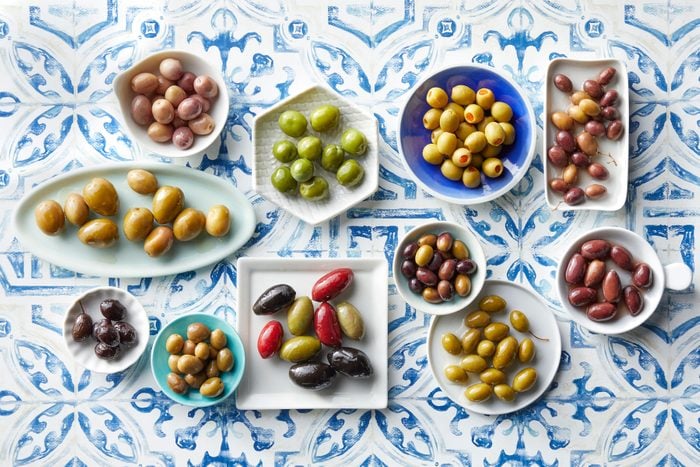
Different types of olives yield different levels of salty, sweet, bitter, mild, tangy and buttery notes that lend themselves to flavoring all sorts of meals, snack boards and cocktails. Here's how to choose the tastiest kinds.
Spooning them out of the jar for a salty snack, grinding them into a tapenade, slicing them over a pizza, spearing them to garnish a martini…the list could go on when it comes to all the uses for olives.
Granted, if you hate olives, you really hate them. But if you love olives, then your fridge is probably always stocked with several types of olives. They’re the first thing you consider when planning a charcuterie board (yes, even more than the main meats and cheeses) and you’re always willing to try a new variety when you come across one. Get ready to learn more about your beloved fruit—from growing to storing to all the different types of olives.
Olive Growing and Harvesting
Olives grow on twisted, beautiful trees. They thrive in the long, hot summers and cool winters of the Mediterranean and prefer dry weather to humidity. Because all olives on the tree ripen at different times, the most common way to harvest them is also quite time-consuming—it’s done by hand. Though many olive groves do use machine harvesting, the olives harvested by hand are less likely to be bruised or rotten and will result in high-quality taste.
The harvest time is usually at night since the cooler temperatures preserve the olives’ aromatics. The harvest season starts in October in most regions where olives grow. Depending on how the growing season went, groves in Spain might end their harvest season in February while areas in Italy might end their harvest by December.
What Determines the Color of an Olive
Like grapes, all olives start out green. As they ripen on the tree, olives will turn a faint brown to purple to almost black. So the milder green olives you might serve on a relish tray before a meal are picked early in the harvest season, and the strong, briny black olives you slice over salads or bake into artful focaccia are picked later in the harvest season. No matter the color, almost all olives are part of the Mediterranean diet due to their healthy fats and range of antioxidants.
Curing Olives
The curing of olives is crucial to their texture and flavor. It’s also crucial to their edibility—uncured olives are so bitter they’re practically inedible! If you’ve ever been on an olive oil tasting or tour, you’ll know that’s why you can’t pluck them off the tree to snack on like you might with apples or peaches.
The type of curing olives go through will determine if the olives taste salty or sweet, bitter or buttery, mild or tangy.
- Brine-curing: This is a saltwater curing process that can take up to a year to bring out the full flavors of certain olive varieties. Brine-curing is a very traditional process and can be used on green, purple and black olives.
- Dry-curing: Instead of a saltwater brine, dry-cured olives are rubbed with salt and left for a month to air-dry. Once the dry-curing is complete, the olives are placed in olive oil to soften and remove excess salt. This process produces very strong flavors, which you can taste in varieties like Nyons and beldi.
- Lye-curing: Lye, which is an alkaline product you might recognize as an ingredient in soap, can also be used to cure olives. Cerignola and manzanilla varieties get their flavor from lye-cures. After the lye-curing, olives will go through a salt brine as well.
- Water-curing: This is a rare process because it’s such a lengthy one. Water-curing involves soaking and rinsing olives multiple times to remove the bitterness in them and turn out a mild-tasting olive.
Storing Olives
Olives should always be stored in their brine to help them retain moisture. This is why jarred olives are always sold in liquid. When scooping olives yourself at the olive bar, be sure to include some of the brine. You’ll also want to choose olives with firm skin and no visible bruising (much like choosing the right bananas, apples and avocados).
Jarred olives can remain in your pantry until you open them. Once the seal on the jar is broken, you should store the olives in the fridge. Some of them can last up to a year in the fridge if stored properly. Olive bar olives should be eaten within 14 days.
Like other foods, if you open a jar of olives that have been sitting in the fridge for awhile and they smell funky, it’s time to toss them.
Types of Olives
The best olives you can buy certainly comes down to taste, but it’s also important to think about what you’ll be using them for. Below are some of the most common types of olives you’ll find in grocery stores and special markets.
Kalamata
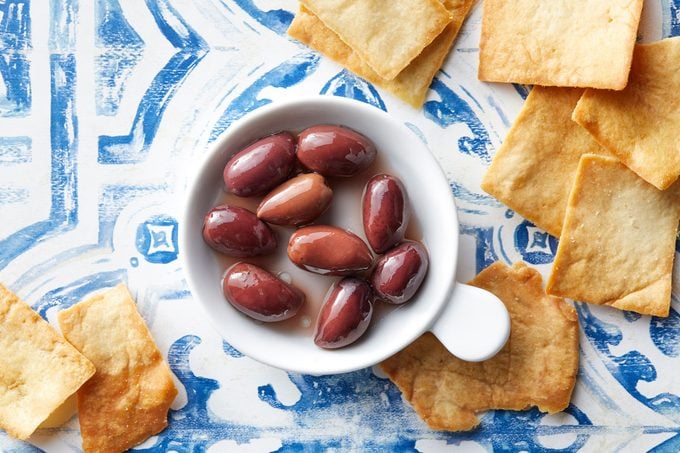
Kalamata is a Greek olive varietal and is probably the type you’re most familiar with, whether you like olives or not. You can find these dark purple olives chopped into Greek salads, minced into a tapenade or in their whole form on a charcuterie spread. And is there anything better than kalamata and feta cheese?
They’re salty and rich in flavor and meaty in texture. Though they look purple, they’re technically considered to be dark brown and thus plucked closer to the end of harvest.
Castelvetrano
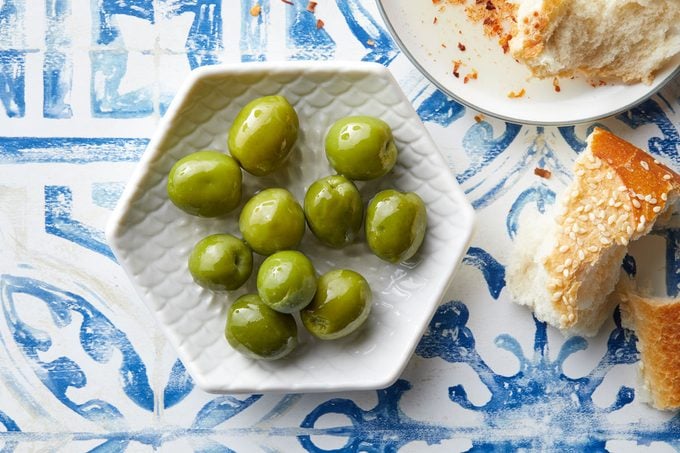
Another olive you’re probably familiar with, and one you might like even more than beloved kalamatas, is the Italian castelvetrano. Lime green in color and buttery and mild in flavor, it’s almost impossible not to love this humble snack. Because they’re not as briny as other varieties, castelvetranos are cheese board accoutrements you’re going to want to pair with cured meats to balance out the salt.
Mission
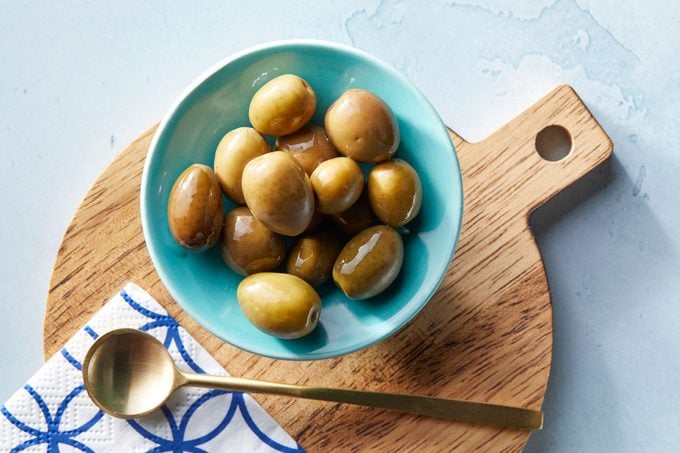
While you might think of olives as more of a Mediterranean food, the U.S. does produce a type of olive you’re probably familiar with: mission olives. They’re mild and almost grassy in flavor. You can stuff these matte black olives with cream cheese to serve on appetizer trays or sprinkle sliced mission olives over homemade pizzas. They’re also an easy upgrade to queso dips and pasta salads.
Cerignola
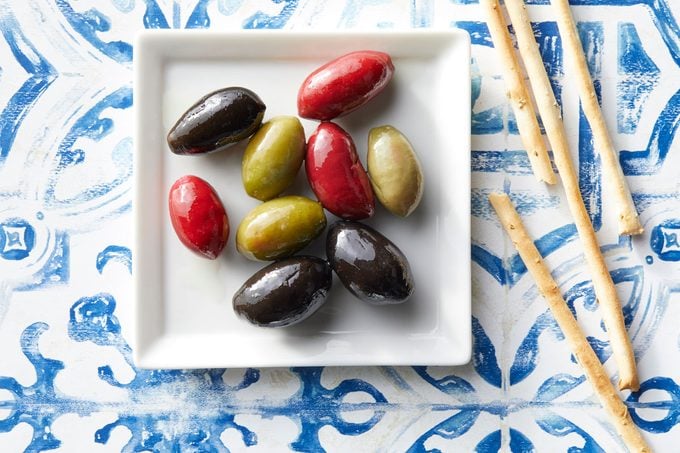
Antipasto platters and martinis alike will get an elevated twist with cerignola olives. Meaty and mild, these green Italian olives might even pique the interests of those who aren’t typical olive fans. Because they’re larger than many other varieties, they’re quite easy to stuff. Try stuffing cerignolas with garlic and use them in a base for this stuffed-olive cod.
Niçoise
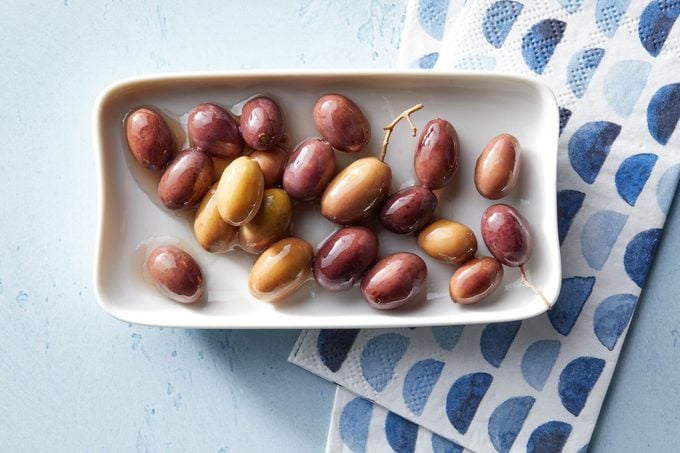
As the name suggests, niçoise olives hail from France. If you’ve ever made a niçoise salad, you might have just used kalamata olives. If you can find the olives that share the salad’s name, though, it is absolutely worth a swap! The slightly tangy and rich notes of niçoise olives work with the vinegar and Dijon mustard dressing to amp up the more mild salad ingredients.
Taggiasca
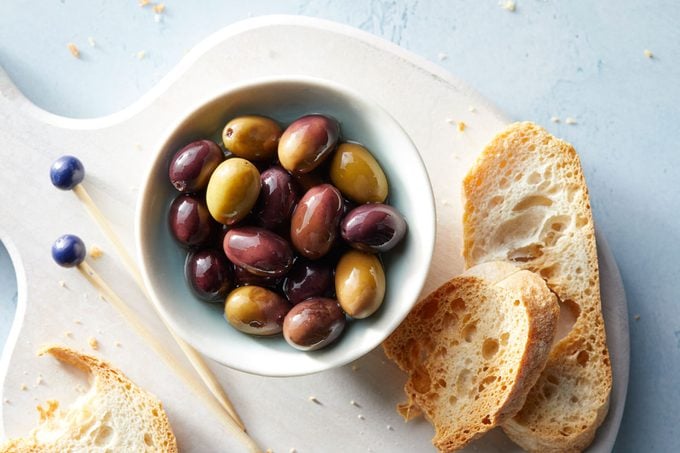
Also sometimes called Ligurian olives because of the Italian region they grow in, these deep purple olives land more on the sweet side. They are small and have an almondlike aftertaste, which would make them perfect in an appetizer like marinated almond-stuffed olives.
Manzanilla
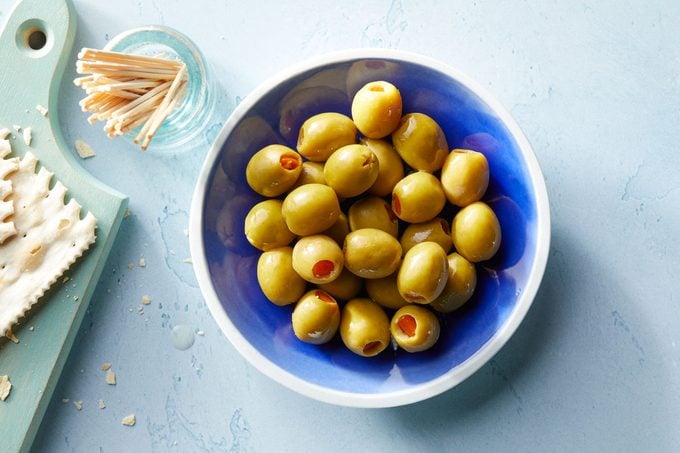
If you’re familiar with vintage appetizers like pimiento cheese spread, then you’re probably just as familiar with pimiento-stuffed manzanilla olives. You know the little green olives you could eat the whole jar of because they’re just that good? Manzanilla olives grow in Spain and produce a small pit that is often removed and replaced with a bit of pimiento. They’re mild and salty, and if you’re not eating them straight out of the jar, you can top them on muffuletta or tea sandwiches.
Nyons
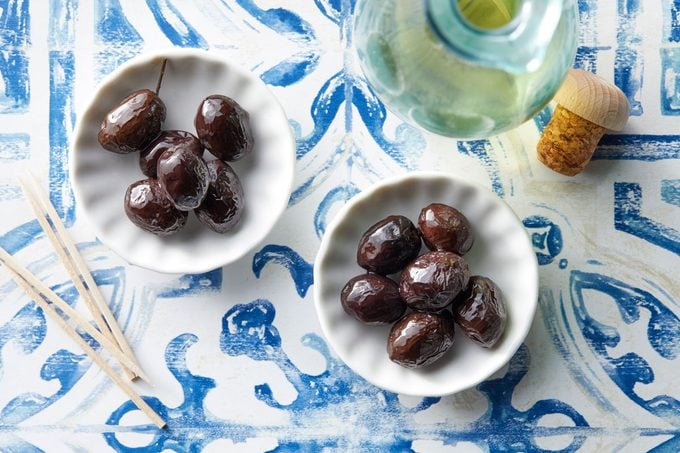
Nyons are black olives from France that are chewier than the other firm olives in this list. The pits of these olives are quite large and their skin is wrinkly from the late harvest and brining process—not a sign that they’ve gone bad! Although black olives tend to lean more bitter, Nyons olives are actually sweet. This makes them ideal for tapenades and dishes of marinated olives.
Gordal
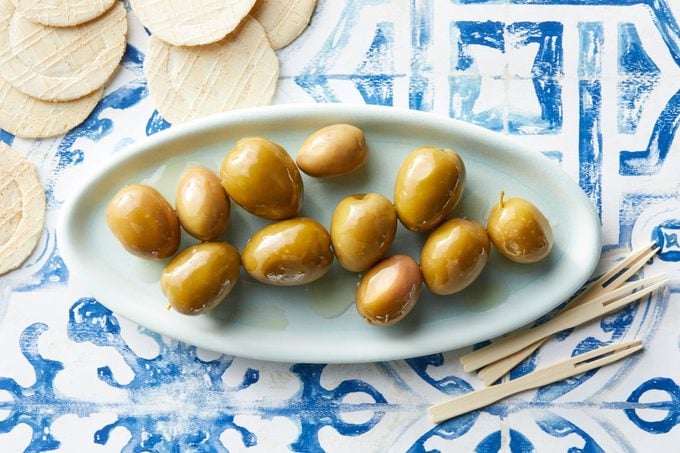
Large, juicy and refreshing, gordal olives originate from Spain. Gordal translates to “fat one,” and the size of these olives certainly holds true to the name. They’re green and meaty and somewhat similar to the tinier manzanillas mentioned above. You can stuff these with cheese, dish them on a cheese board or enjoy straight out of the jar.
Beldi

Beldi olives from Morocco aren’t for olive newbies because they’re quite salty and bitter. They have a wrinkly exterior and a chewy bite, giving them the ideal texture for salads. The boldness of beldi olives would complement this citrus fennel salad, and they’d be great as an appetizer served with grated ricotta salata.
Picholine
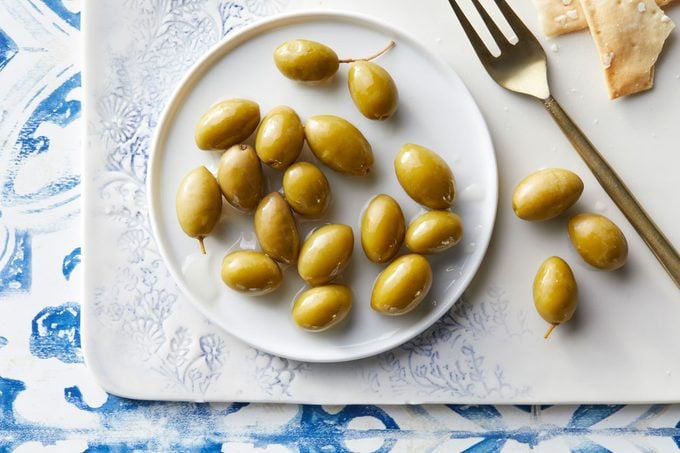
French picholine olives brighten and flavor martinis and you can spear several with pearl onions for a Bloody Mary garnish. They’re both briny and buttery and are harvested early to maintain that bright green color. If you’re not using them in cocktails, nest them with provolone wedges and ribbons of prosciutto on a meat and cheese board or serve them with your favorite seafood recipes.
Amfissa
Grown in central Greece, these bright green olives are small and firm. Dot a colorful crudites platter with green amfissa olives for a slightly citrusy, yet mild taste. Because they’re more citrusy than sharp, amfissa olives pair well with hummus, crumbled feta or goat cheese. Talk about a snack we can’t resist!
